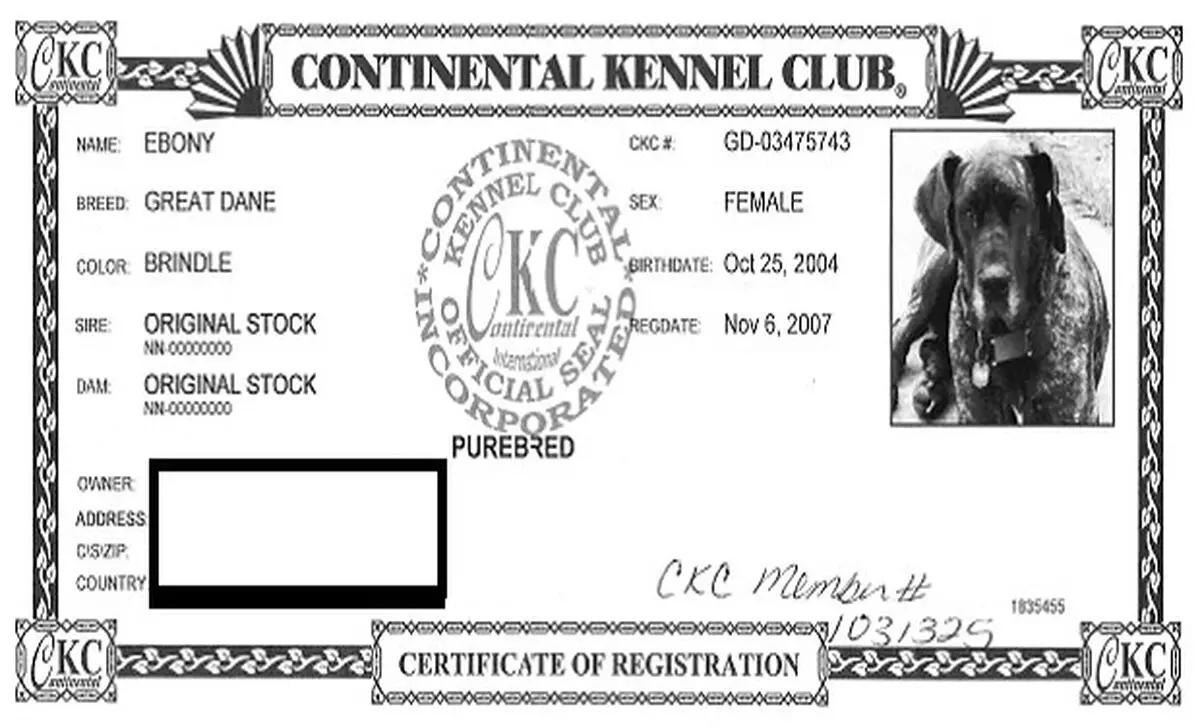The North American Purebred Registry (NAPR) has long been a trusted provider of animal registration services. It is a reliable source of pedigree papers for horses, dogs, and other domestic animals.
However, recent allegations have surfaced claiming that the NAPR is a fake registry. They falsely claim to provide official documentation for animals that may not even be purebred. This revelation has led to widespread concern amongst animal lovers and conscientious breeders alike, who rely on accurate pedigree information to maintain the Health and integrity of their animals.
We will explore the truth behind the allegations, like whether the North American Purebred Registry is fake. Unveiling the facts surrounding the organization’s legitimacy and credibility.

Is The North American Purebred Registry Fake? Answered

The North American Purebred Registry (NAPR) is not considered fake in the sense of being entirely illegitimate. However, it’s important to note that NAPR is not as widely recognized or esteemed as other prominent registries like the American Kennel Club (AKC) or the United Kennel Club (UKC).
NAPR may have different registration requirements and standards compared to more established registries, which could affect the perceived value or legitimacy of its registrations. Some breeders and dog enthusiasts may prefer to register their dogs with registries with a longer history or greater recognition within the dog breeding community.
Here Are Some Key Points To Consider:
- Reputation and Standards: The NAPR is criticized for having less stringent standards for breed registration. This means that dogs registered with the NAPR may not meet the rigorous criteria set by more established registries like the AKC or UKC.
- Recognition: Many breeders, veterinarians, and dog enthusiasts do not recognize NAPR registration as a reliable indicator of a purebred dog.
- Breeding Programs: Reputable breeders typically prefer to register their dogs with organizations that have strict breeding and registration standards. The NAPR’s more lenient approach can make it less appealing to those committed to maintaining high breed standards.
- Verification: If you are considering purchasing a purebred dog, it’s important to verify the breeder’s credentials and the registry they use. An AKC or UKC registration usually offers more assurance of the dog’s pedigree and the breeder’s adherence to ethical breeding practices.
In summary, while the NAPR is not “fake,” it is not as highly regarded as the AKC or UKC. Potential dog owners should exercise caution and do thorough research when considering a dog registered with the NAPR.
Allegations Against The North American Purebred Registry

The allegations against the North American Purebred Registry involve several issues related to dog breed verification and paperwork authenticity. Some buyers have reported receiving registration applications for breeds like Bull Terriers, which later turned out to be improperly documented.
This has led to disputes over the legitimacy of the provided AKC papers. Concerns have been raised regarding the North American Purebred Registry’s practices compared to more established organizations like the United Kennel Club. In some cases, discrepancies in litter registration records have further cast doubt on the registry’s credibility.
How To Fill Out And Sign The North American Purebred Registry Online?
To fill out and sign the North American Purebred Registry (NAPR) online, follow these steps:
Visit the NAPR Website:
- Go to the official North American Purebred Registry website.
Access the Forms:
- Navigate to the forms section of the website to find registration applications and other necessary documents.
Download the Form:
- Download the specific form you need, such as the individual dog registration application, litter registration form, or other relevant documents.
Fill Out the Form:
- Open the downloaded form using a PDF editor or any compatible software.
- Enter all required information accurately, such as the dog’s breed, name, date of birth, and any details about the sire and dam (parents).
- Provide your contact information and any other required details.
Digital Signature:
- You can sign directly within the PDF editor if the form allows digital signatures. Look for the signature field and use the software’s signing tool to add your signature.
- If a digital signature is impossible, you can print the form, sign it manually, and then scan it back to your computer.
Upload the Completed Form:
- Return to the NAPR website and find the section to upload completed forms.
- Follow the instructions to upload your filled and signed form.
Payment:
- Complete any required payment for the registration process. The website should provide options for online payment.
Submit the Form:
- After uploading and payment, submit the form through the website. Make sure to confirm that the submission.
Confirmation:
- Wait for a confirmation email or notification from NAPR that your registration application has been received and processed.
You can contact the North American Purebred Registry directly through their website’s customer service or support channels for specific details or any additional assistance.
How Can You Prove Your Dog Is Purebred?

Proving that your dog is purebred typically involves documentation and verification through a recognized dog breed registry. Here are some common methods:
- Pedigree Papers: Pedigree papers, often provided by reputable breeders, detail your dog’s lineage, including its parents, grandparents, and sometimes further back.
- Registration Certificates: Registration certificates from official breed registries like the AKC or UKC formally recognise your dog’s purebred status.
- DNA Testing: DNA testing can provide scientific evidence of your dog’s breed ancestry. Companies like Embark or Wisdom Panel offer DNA testing kits that analyze your dog’s genetic makeup and provide insights into its breed composition. While DNA testing can be useful, it’s important to note that not all registries accept DNA testing alone as proof of purebred status.
- Breed Clubs: Breed clubs associated with specific breeds often provide resources and support for proving a dog’s purebred status. They may offer guidance on obtaining and verifying pedigree papers or registration certificates.
- Breeder Documentation: If you purchased your dog from a reputable breeder, they should provide documentation of your dog’s purebred status. This may include pedigree papers, registration certificates, or other relevant documents.
Ensuring that any documentation or certificates you receive come from reputable sources and recognized breed registries is essential to reliably establishing your dog’s purebred status.
Is The North American Purebred Registry Trustworthy?
Determining the trustworthiness of the North American Purebred Registry (NAPR) requires careful consideration of various factors:
- Registered Dog Verification: Verify whether dogs registered with NAPR are recognized in reputable dog shows and competitions. Participation in such events can indicate the legitimacy and acceptance of NAPR registrations within the broader dog community.
- Registration Certificate Validity: Assess the validity and acceptance of NAPR’s registration certificates.
- Individual Registration Process: Examine NAPR’s registration process. Is it thorough and transparent, ensuring accurate documentation of each dog’s lineage and ownership?
- Comparison with Other Registries: Compare NAPR with prominent registries such as the American Pet Registry. Understanding how NAPR stacks up against established counterparts can provide insights into its credibility.
- Feedback and Reviews: Seek feedback and reviews from dog owners who have experience with NAPR. Their experiences with registration, ownership transfers, and customer service can offer valuable perspectives on NAPR’s reliability.
By carefully evaluating these factors and conducting thorough research, you can make an informed assessment of the trustworthiness of the North American Purebred Registry.
What Are The Facts About The North American Purebred Registry?

The North American Purebred Registry (NAPR) is an organization that registers purebred dogs. Still, it operates differently from more widely recognized groups like the American Kennel Club (AKC) or the National Kennel Club.
While AKC dogs, including popular breeds like the Labrador Retriever, are registered based on strict breed standards, NAPR might have different standards or acceptance criteria. This can include breeds like the American Pit Bull Terrier or Pit Bull Terrier, which may vary across different registries.
NAPR’s approach might attract both responsible breeders and backyard breeders. Responsible breeders adhere to breed standards and prioritize the health and temperament of their dogs. In contrast, backyard breeders may not follow such standards, potentially leading to health or behavioral issues in the offspring.
The registry likely facilitates processes like transfer of ownership for breeds such as the Australian Cattle Dog or Australian Shepherd. Understanding NAPR’s unique standards, practices, and acceptance criteria for breeds is essential for those considering registration with the organization.
What Is The Difference Between An APRI And An AKC-Registered Dog?
The difference between an APRI (American Pet Registry Inc.) and an AKC (American Kennel Club) registered dog lies in the respective registries’ recognition, standards, and credibility.
Registry Recognition:
- AKC is one of the most renowned and widely recognized dog breed registries globally, known for its strict standards and rigorous breeding requirements.
- While a legitimate registry, APRI may not hold the same level of recognition or prestige as the AKC.
Pedigree and Standards:
- AKC registration ensures that a dog’s pedigree meets specific breed standards, promoting responsible breeding practices and maintaining breed integrity.
- APRI registration may not adhere to the same stringent standards as the AKC, potentially allowing for a broader range of dogs to be registered, including those from commercial breeders or pet owners.
Credibility and Reputation:
- The AKC’s long-standing reputation and stringent registration process contribute to its credibility among dog owners, breeders, and the broader community.
- While APRI is a legitimate registry, it may not possess the same level of recognition or reputation as the AKC, leading to questions about the authenticity or value of dog papers issued by APRI, especially in cases associated with puppy mills or questionable breeding practices.
Breed Specifics:
- Breeds like the American Staffordshire Terrier may be registered with the AKC and APRI. However, the standards and requirements for registration may differ between the two registries, impacting the dog’s perceived quality and lineage in the eyes of potential owners.
In summary, while AKC and APRI provide dog registration services, the differences lie in their recognition, standards, and reputation within the dog breeding and ownership community. Dog owners must research and understand the implications of registration with either registry, especially concerning the breeding practices and welfare of the dogs involved.
Conclusion
After thorough research and examining the North American Purebred Registry’s practices, it is evident that there are valid concerns about the legitimacy of this organization. From its lack of clear standards and guidelines to its questionable accreditation process, it is understandable why there are doubts surrounding the registry’s authenticity.
While it may be tempting to register a pet with NAPR for convenience, it is important to consider the implications and potential consequences carefully. This concerns pet owners and breeders alike, as the registry plays a crucial role in recognizing and verifying the purity of various animal breeds.
Frequently Asked Questions
1.Is The North American Purebred Registry A Legitimate Source?
Yes, the North American Purebred Registry (NAPR) is a legitimate source for registering purebred animals. It is recognized by various breed clubs and organizations, providing documentation and certification for purebred animals in North America.
2.What Are The Concerns About The North American Purebred Registry?
Concerns about the North American purebred registry include inbreeding, leading to genetic health issues. Lack of oversight and regulation leading to potential fraud or misrepresentation of pedigrees. And the focus on appearance rather than the overall health and temperament of the registered animals. These factors can impact the long-term health and well-being of purebred animals within the registry.
3.How Reliable Is The North American Purebred Registry?
The North American Purebred Registry (NAPR) is generally considered reliable for registering purebred animals, as it follows strict guidelines and requirements for documentation. However, like any registry, there may be occasional instances of error or fraud. Individuals need to do their own research and due diligence when using the NAPR or any registry to ensure the legitimacy and accuracy of the registrations.
4.Is The North American Purebred Registry A Reputable Organization?
The North American Purebred Registry has faced criticism and controversy over the years regarding its registry’s legitimacy and breed registration standards. It is essential to conduct thorough research and seek feedback from reputable sources before associating with this organization.
5.Is The North American Purebred Registry A Scam?
Reports and allegations of unethical practices and inconsistencies with the North American Purebred Registry have led to scepticism and controversy within the breeding community.
